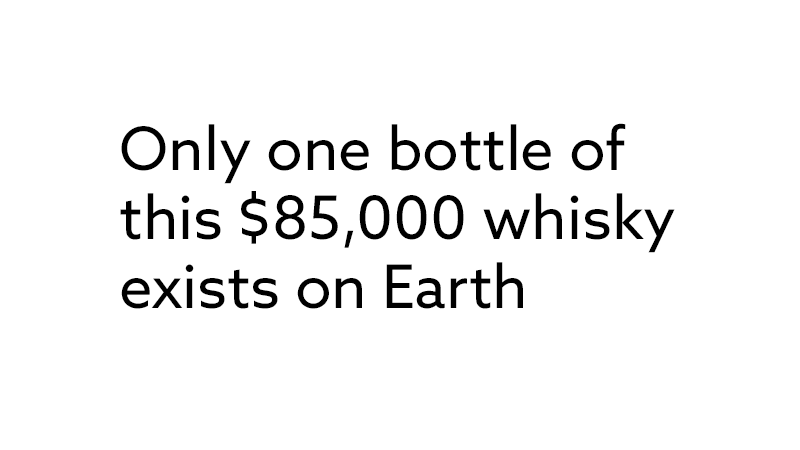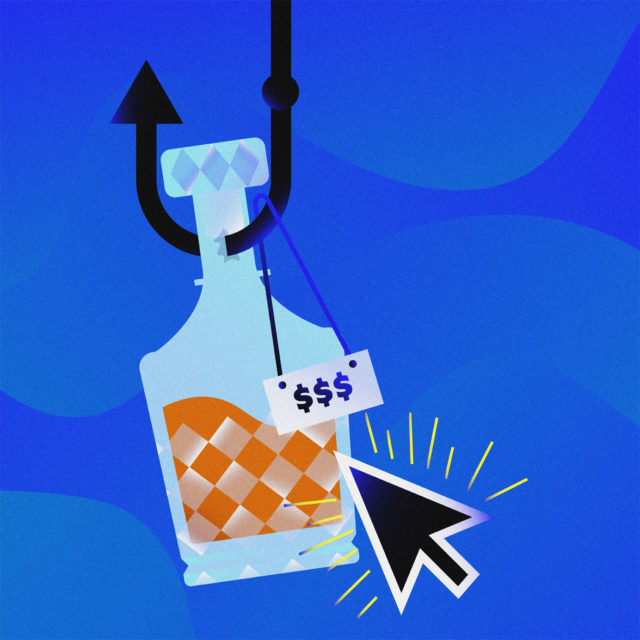On a Monday evening in late February 2019, a small group of New York-based writers went to Sotheby’s for a lavish dinner prepared by Chef Massimo Bottura, the famed maestro behind the world’s best restaurant, Osteria Francescana. This private event was ostensibly held to announce The Dalmore’s new, 49-year-old Scotch, L’Anima, which was packaged in a single bottle and would eventually fetch £108,000 at auction (approximately $139,500), to be donated to the chef’s non-profit organization, Food for Soul.
Really, though, if we’re being honest, this Scotch was created and that event held so the invited journalists would write about it — and dozens eventually did.
It seems like once a week some company releases a brand new, incredibly old, gorgeously packaged, hilariously rare, and extremely f*cking pricey whisky. How it tastes and whether someone actually buys and drinks the stuff is beside the point. Instead, brands are creating what essentially constitutes “clickbait Scotch” — products designed to generate headlines readers will click on, not actual spirits people will sip and savor.
“[It] helps break us out of the very focused whisky press, much more to lifestyle press, with a bit more of an interesting angle,” Claire Blackadder, The Dalmore’s global head of brand, says about these expensive releases. “We don’t want to just be a luxury whisky, we want to be a luxury brand, and act how other luxury brands act.”
So do quite a few other Scotch brands these days. In mid-April 2019, The Glenlivet released the third installment in its “Winchester Collection,” a 50-year-old single malt of which only 150 bottles were produced. They sold for $25,000 each.
To simply explain The Glenlivet Winchester Collection Vintage 1967’s packaging would be enough for you to write the entire lead to your article: The hand-blown, hand-engraved, and hand-painted glass bottles were designed in collaboration with award-winning British furniture designer Bethan Gray, who took her inspiration, according to the press release, “from the rolling hills that surround The Glenlivet distillery in Scotland.”
Do the buyers of these bottles actually drink them? Occasionally, I am told, but it hardly matters. Many speculate that these well-heeled buyers are more interested in converting liquid cash into literal liquid and, hey, if a brand gets a whole bunch of stories out of it, that’s great, too.
“The problem is: the people who will buy these are not buying whisky, they’re buying status,” Joshua Hatton, president and CEO of Single Cask Nation, posted to Facebook upon the release of The Macallan’s $53,000, 52 Year Old earlier this year.

The Macallan is today’s best-known producer of liquid-as-investment. The company was creating clickbait Scotch before there was an internet to click on. In 1986, and then 1993, it released two different 60-year-old bottlings that sold for around £15,000 each (about £26,400, or $34,200, by today’s standards).
The Macallan’s luxury releases didn’t really start gaining buzz until 2002, when it launched its Fine & Rare collection. By 2007 The Macallan 1926 was auctioned off for $54,000 — then the most expensive whisky ever sold and, thus, catnip for those writing headlines at all the blogs proliferating at the time. An arms race to be included in “Most Expensive Scotch” articles and listicles thus begun.
“I can actually look at this with some sort of perspective,” says Robin Robinson, author of the upcoming “The Complete Whiskey Course: A Comprehensive Tasting School in Ten Classes,” and not a fan of these luxury bottlings. “Say Macallan has some 50-year-old whisky. Prior to the current boom, they would just have taken that and blended it into a younger bottling, have it be part of their 18- or 25-Year-Old range, and that would be the end of it. No one was buying whisky back then anyway, so why would someone buy an old whisky? Now there’s a market.”
Over the last two decades, whisky got red hot. Companies were able to find customers for just about anything, no matter how absurdly it was priced.
Dalmore entered the fray in 2006 when it launched its own Rare & Prestige Range, which included a 40-year-old bottle marketed for £1,300. By 2010 the company was offering just three bottles of something called 64 Trinitas. The price? A whopping £100,000.
These Rare & Prestige releases were “not about breaking world records but about making the best whisky money can buy,” master distiller Richard Paterson claimed at the time. “Not every whisky distillery has these [old releases], and the ones that don’t have them get jealous and become bitchy at me,” he added.
Enough companies did have the stock for these old releases, however, and so the niche category continued to explode. Glenfiddich offered a 50 Year Old in 2013 for $26,000. The Glenlivet Winchester Series began in 2014 with a 1964 release for $25,000 (A headline: Glenlivet’s $25,000 Whisky That’s Actually a Bargain… Sort Of). Glenfarclas came out with the John Grant 60 Year Old in 2015 for $20,000. And Macallan continued to crank out flashy release after flashy releases, grabbing headlines a few times a year with yet another insane product.
That would seem to have culminated with last summer’s The Macallan 72 Years Old in Lalique, which cost $60,000 and was packaged “in a unique and bespoke crystal decanter and presentation case that are defined by the outstanding architectural complexity of our new brand home,” according to the press release (but, quite frankly, to me, looked impossible to pour).
“This is something they should be serving at Hudson Yards,” Robinson says, referring to Manhattan’s new, much-maligned, uber-luxury real estate development. “It’s just full of ridiculous glitz and more expensive than it really needs to be.”
The Macallan 72 Years Old in Lalique netted more than 10 pages of articles dedicated to it, according to a recent Google search.
Like Robinson, most whiskey drinkers I talk to seem to loathe these releases. Many think they are downright bad for an industry that has long struggled to shed it’s 1-percent-er label and attract more younger, middle-class drinkers.
“A 50-year old-whisky, I don’t care where it’s been, that’s not prime-condition whisky,” Robinson says. “So now marketing takes over. For these Lalique bottles, you’re paying as much for the bottle as the actual whisky inside it. Does it take a little bit of the heart and soul out of whisky? Yeah, it does.”
Alas, these luxury releases don’t show any sign of slowing down. Last year alone, Johnnie Walker released the John Walker Masters’ Edition for $25,000 a bottle, Highland Park offered a 50 Year Old for $15,000, and Balvenie released 12 total bottles of its 50 Year Old for $38,000 apiece.
Does it always have to be a cynical play, though?
Craigellachie seems to actually be using its latest clickbait release for a bit of good. Its 51 Year Old was not put in some crazy decanter, nor was it even offered for sale when it was released just this spring. Instead, the brand decided to give away complimentary drams of it at pop-up bars throughout the world, allowing many average folks to taste a luxury libation for the first time in their lives.
(Of course, that liquid largesse still netted plenty of headlines.)
If that’s what it takes to get a heritage spirit company some press these days, and if it will maybe teach beginners about the single malt category, I suppose that’s not the worst thing in the world. Maybe, in some convoluted way, these clickbait luxury offerings are actually how you do attract a more mainstream audience.
“I think there’s a lot of people that are still learning about malt whiskey and I think these luxury releases do help them navigate things a little more,” says Blackadder. She imagines such consumers might read a clickbait Scotch headline and think, “‘Wow, they have these whiskies at amazing ages getting amazing press coverage. Maybe I should see if the rest of their range lives up to that.’”
